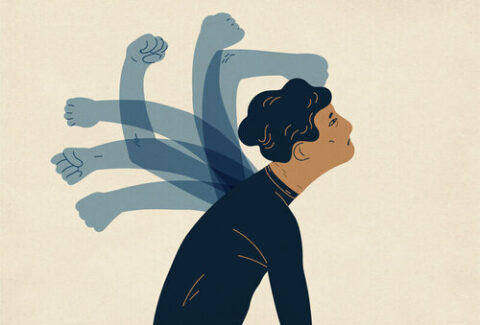New Strategies for Substance Use Assessment: Addiction and its comorbidities
“I was told to come here and see you to get medications for my bipolar. I was told I have bipolar, because my mood goes up and down, and that bipolar is why I can’t stay sober. Will I be able to stop using cocaine once I get meds for bipolar?†Josephine asked Darla, her psychiatrist, who was meeting with her for the first time, for an initial psychiatric assessment. “Thank you for coming, Josephine. We are going to do our best to get to the bottom of all this. Substance use disorders are rather complex, but a thorough evaluation can really help,†responded Darla, with a smile.
The above clinical case introduced Josephine and Darla in a previous article, of this series, entitled, New Strategies for Substance Use Assessment: What Causes Addiction? In that article, I explained that while the initial misinformed and misguided explanatory models of substance use disorder still linger, the cause of addiction has been shown to follow a bio-psycho-social and cultural model, and the needed assessment and treatment also require a similar multidimensional approach. I also explained that as clinicians, we are responsible for demystifying the cancerous beliefs about Substance Use Disorder; we ought to incorporate this into our thinking, in the way we both communicate and view our patients and clients—from a bio-psycho-social and cultural based explanatory model.
Josephine asked Darla if treatment for her Bipolar Disorder would allow her to finally be able to stop using cocaine.  Darla responded that Substance Use Disorder is a complex matter, and for her to answer correctly, she will need to perform a thorough evaluation and she did, indeed. Below are the findings summarized.
Josephine reported mood changes,
lasting only minutes to hours at a time
A hypomanic or manic episode will last at least four days or one week, respectively. Not minutes and not hours, in which case, it is called anything but mania or hypomania. At least one episode of mania or hypomania is required to make the diagnosis of Bipolar I or II, respectively.
Calling mood changes, lasting minutes to hours, mania or hypomania, has been partly the reason, that many children, for example, have been misdiagnosed with Bipolar Disorder, which, in turn, has prevented them from receiving the proper treatment they deserve, adequately addressing their trauma, learning disorder, psychosocial needs, the social determinants of health, including family dynamics and support and unsuitable learning environments. As a child and adolescent psychiatrist, I personally see this phenomenon as a disgrace to our healthcare system, as a whole.
Josephine has a history of trauma
Josephine did not have a history of physical or sexual abuse. However, she describes growing up, “I cannot remember one day when my mother told me she was proud of me. At age seven, she made me live with my godmother, because she couldn’t take care of me.
I felt so abandoned, and each time I think about that, I just have to use.â€Â Josephine continued, “Living with my godmother wasn’t easy. Her children went to private school, and I was in public school, a school where no one looked like me; I just felt lost, and even today, I do not know who I am.â€
How often do you ask your patients and clients about
all five types of abuses,
as opposed to just physical and sexual abuse?Â
Physical neglect, emotional neglect, and emotional abuse are often overlooked, yet, are highly correlated with substance use disorders and internalized symptoms like anxiety and depression. Furthermore, the sense of self becomes very unstable, which makes the coping mechanisms rather unhealthy, hence the tendency for traits of personality disorder to be present in this patient population.
As I often say, it is not without reason that substance use disorder was once known as Addictive Personality Disorder. As I mention in a previous article, Substance Use Disorders are complex, the comorbidities are complex, and therefore, assessment and treatment need to follow accordingly.
“I was told to come here and see you to get medications for my bipolar. I was told I have bipolar, because my mood goes up and down, and that bipolar is why I can’t stay sober. Will I be able to stop using cocaine once I get meds for bipolar?†Josephine asked Darla, her psychiatrist, who was meeting with her for the first time, for an initial psychiatric assessment. “Thank you for coming, Josephine. We are going to do our best to get to the bottom of all this. Substance use disorders are rather complex, but a thorough evaluation can really help,†responded Darla, with a smile.
In summary, Darla, indeed, did her best. She took a thorough history, obtained collateral information, conducted a diagnostic formulation and showed that Josephine did not have Bipolar Disorder. Josephine had been reacting to the trauma she experienced since a child. This, especially for such a long time, seems to have been a contributing factor to her Cocaine Use Disorder. And, importantly, neither Depakote or Lithium, nor a combination would have been able to help Josephine heal from past trauma.
References:
-
Malena RC, Nestler EJ, Hyman SE (2009). “Chapter 15: Reinforcement and Addictive Disorders”. In Sydor A, Brown RY. Molecular Neuropharmacology: A Foundation for Clinical Neuroscience (2nd ed.). New York: McGraw-Hill Medical. pp. 364–375.
-
Angres DH, Bettinardi-Angres K (October 2008). “The disease of addiction: origins, treatment, and recovery”. Dis Mon. 54 (10): 696–721.
-
Enoch, Mary. “The role of early life stress as a predictor for alcohol and drug dependence”. Psychopharmacology: 17–31.
-
Hyman SE, Malenka RC, Nestler EJ (2006). “Neural mechanisms of addiction: the role of reward-related learning and memory”. Annu. Rev. Neurosci. 29: 565–598.
-
Cheetham A, Allen NB, Yücel M, Lubman DI (August 2010). “The role of affective dysregulation in drug addiction”. Clin Psychol Rev. 30 (6): 621–34.
-
Franken IH, Muris P (2006). “BIS/BAS personality characteristics and college students’ substance use”. Personality and Individual Differences. 40 (7): 1497–1503.
-
Dawe S, Loxton NJ (May 2004). “The role of impulsivity in the development of substance use and eating disorders”. Neurosci Biobehav Rev. 28 (3): 343–51.







